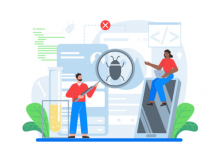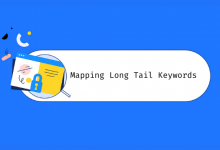Reach the right target audience with SEO

How do I reach my target audience with SEO? Why do companies invest in online marketing? To get more traffic or leads, or to increase brand awareness?
Absolutely all true, but I think it really only revolves around one very important thing, which is to bond with your target audience. Because when you know how to bind your target group to you, you can achieve growth. The question is, of course, how we can use SEO for this.
First, you need to know who you are talking to (who is my target audience). Finding out who your visitors are or should be is hugely important. Because if you know who your target audience is, you can start using things that may interest them. With this, you can reach these people and build that bond.
This will ultimately make the difference as to why visitors choose you and not the competition. In marketing terms, this is called person profiling.
Table of Content
What is a person?
A person is, say, a model visitor or customer to whom you address. The person is based on data from market research and actual data from your existing customers. The person is a model for your target group.
During an intake interview, I always ask my clients for whom they are offering a product or service. If the answer is “everyone”, then I know there is still some work to be done. Because your product is never intended for everyone, but for a specific target group. Only then can you start thinking about how to target this target group.
Take this website as an example. These blog posts are not read by everyone. For example, my kids don’t even read these because they have no interest in SEO.
But there are hundreds of people in and around my network who do read this because they are concerned with the search results of their website. The persons that these blogs are aimed at are therefore owners of websites, web designers, or online marketers who mainly focus on SEO activities. These people are representative of my target group.
So, the better we understand who we want to reach, the better we can do our job.
How do I map my target audience?
If you really want to understand your target audience, you need to learn a lot more about them. You are looking for general connections. This not only gives you insight into what they do but also why they do it.
If you take this seriously, the returns from your SEO efforts will be much greater than if you start without preparation.
When you are going to immerse yourself in your visitor, there are three areas that you should pay attention to:
- Demographic data
- Social dynamics
- Mapping empathy
Demographic data
Demographic data can be easily found with the help of market research and data. You have to be sure that the data is reliable and up to date. Consult multiple sources to check the date of the studies.
When determining the demographics of your person, you focus on understanding:
- How do they describe themselves ?; Father, mother, student, sportsman, entrepreneur, freelancer?
- Where they live; village, city, or on the outskirts of the city?
- Which generation they belong to; baby boomers, Generation X, Millenium kids?
- What industry they work for; Construction, ICT, Care, Financial, Media?
- At what level they work; executive, manager, salesperson, consultant?
What does this have to do with SEO?
The use of online marketing for someone who focuses on, for example, a daycare center requires a different approach than when you address the CEO in the banking industry. With this knowledge about your target audience, you are much better able to write the right content using the right search terms.
The social presence of your target group
Humans are social orphans, just look at the enormous influence of social media. People like to belong to a group and not like to stand out or look out of place. So when you know which groups they join, it says something about their own behavior. When researching this, focus your attention on the following things:
- With whom do they maintain contact, subordinates or bosses?
- Which brands are at play or have an influence?
- Which groups do they participate in
- Which media do they prefer (TV, internet, magazines)?
- What do they like and what do they do in their spare time?
How can your SEO benefit from this?
With knowledge about these matters, you create a context within which your approach to the target group fits best. And it certainly comes in handy with link building. Because if you know where your personas hang out, then you’ve also found the places where links can be useful.
Places that you otherwise would not have known about. And with a common audience, you naturally have many extra opportunities to promote your products.
Interests of your target audience
When you’re looking for a connection with your target audience that really delivers results, the only way to get it done is to speak your audience’s language, share the same interests and communicate about it.
By charting the behavior, you look, as it were, through the eyes of your target group. It concerns the following spearheads:
- What to see they? What is going on around them?
- What do they say? To colleagues, friends, their boss?
- What do they do? What are their attitude and behavior like?
- What do they feel? What kind of emotions do they usually experience?
- What do they hear? What are their friends, boss, family, and others saying?
- What do they think? What is it really all about? What are they worried about? What do they want to achieve?
Read More : Benefits of Keyword Tracking for SEO
How can you improve SEO with this?
By gaining a better understanding of the world of your target audience, their view of things, and their way of interacting with others, you can formulate your message in such a way that it appeals to them on a personal level.
We all know how important content is when it comes to SEO. But it is not about how much content, but about the right content. When you can address your visitors in the right way, offer content that meets their deepest needs, you will get many more likes and shares. And that of course leads to more visitors, leads, brand awareness, and so on.
Translation to your SEO strategy
Of course, I hope that with this information you will continue to think about who is the one you want to reach with your SEO strategy.
By defining your target audience, delving into who they are and what their drivers are, you can come up with a much more effective strategy to establish a relationship with your website visitors. And isn’t that what we all do it for?
Do you want to know more about SEO and what we can do for you? Then contact us.
Also Read : SEO: The Ultimate Guide to Ranking in Google









